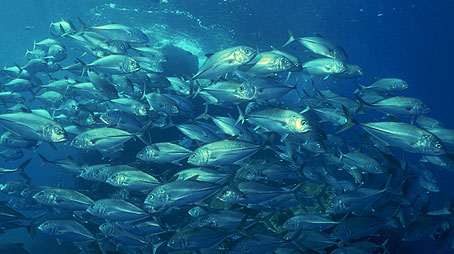| SEARCH |
-

Nov 17, 2015
Reflections on a three-decade legacy
The International Geosphere-Biosphere Programme (IGBP) will come to a close at t...
-
Nov 17, 2015
Use of and access to content on this website
Text and images produced by IGBP in house are free to use with appropriate credi...
-
Nov 12, 2015
Bella Gaia performance and panel discussion to mark IGBP's closure
A musical performance by Bella Gaia will celebrate the achievements and legacy o...
-

Towards Future Earth:
evolution or revolution?
During its three decades of existence, the International Geosphere-Biosphere Pro...
-
A personal note on IGBP and the social sciences
Humans are an integral component of the Earth system as conceptualised by IGBP. João Morais recalls key milestones in IGBP’s engagement with the social sciences and offers some words of advice for Future Earth.
-
IGBP and Earth observation:
a co-evolution
The iconic images of Earth beamed back by the earliest spacecraft helped to galvanise interest in our planet’s environment. The subsequent evolution and development of satellites for Earth observation has been intricately linked with that of IGBP and other global-change research programmes, write Jack Kaye and Cat Downy .
-
Deltas at risk
Around 500 million people worldwide live on deltas, but many of the world's deltas are sinking due ...
-
Climate change: the state of the science
A new data visualization released on the first day of the plenary negotiations at the UNFCCC’s clima...
-
Climate Change:
the State of the Science
Videos now online from the Stockholm public forum to mark the launch of the IPCC's climate report, 2...

Ecosystems and biodiversity
Biological processes interact strongly with physical and chemical processes to create the environment that keeps Earth habitable for life. The more we examine how the Earth system functions, the greater we realise the role played by life in helping control the system. For example, biological processes contribute significantly to atmospheric carbon dioxide absorption by the oceans, which in turn controls atmospheric carbon dioxide concentration on long time scales.
KEELING CURVES
RUNNING Net Primary Productivity DIAGRAM
About 25% of the carbon fixed by phytoplankton in the upper layers sinks and remains stored away from contact with the atmosphere for hundreds or thousands of years.
Biological pump
This biological pump is a major control on how carbon dioxide moves between the oceans and the atmosphere.
Intriguingly, the nature of the phytoplankton species involved in the biological pump may hold a key to the rate of and potential for carbon storage.
Death and decay
The terrestrial biosphere helps control the atmospheric concentration of carbon dioxide. Plants remove carbon dioxide from the atmosphere and convert it to carbohydrates through photosynthesis. However, plant parts eventually die and decay, are eaten, or burn, all of which lead to the decomposition of the carbohydrates and the return of carbon dioxide to the atmosphere.
Terrestrial cycling of carbon is generally much faster than that of the ocean, and much of the short-term variability in the contemporary carbon dioxide growth rate in the atmosphere is due to variability in terrestrial uptake or loss.
Terrestrial life is an important component in Earth system functioning in other ways. For example, the type of vegetation on land influences the amount of water transpired back to the atmosphere. In addition, plants affect how much radiation from the sun is absorbed or reflected.
Plant root patterns and activity are also important controllers of both carbon and water storage.
Biological diversity
The biological diversity of terrestrial ecosystems affects the magnitude of key ecosystem processes such as productivity, and plays a role in the long-term stability of ecosystem functioning in the face of a changing environment.
IGBP closed at the end of 2015. This website is no longer updated.
-

Global Change Magazine No. 84
This final issue of the magazine takes stock of IGBP’s scientific and institutional accomplishments as well as its contributions to policy and capacity building. It features interviews of several past...
-

Global Change Magazine No. 83
This issue features a special section on carbon. You can read about peak greenhouse-gas emissions in China, the mitigation of black carbon emissions and the effect of the 2010-2011 La Niña event on gl...
-
INTERGOVERNMENTAL PANEL ON CLIMATE CHANGE:
How green is my future?
UN panel foresees big growth in renewable energy, but policies will dictate just how big.
-
UK:
'The Anthropocene: a new epoch of geological time?'
Royal Society, Philosphical Transactions A





















